# Open-source Alternatives
Open-source alternatives offer extensive customization through public code access. Most of them provide free / paid cloud service. Some might require self-hosting to use.
Wordpress #1
A powerful, open-source CMS that lets users create customizable websites, from blogs to e-commerce stores, with extensive theme and plugin options
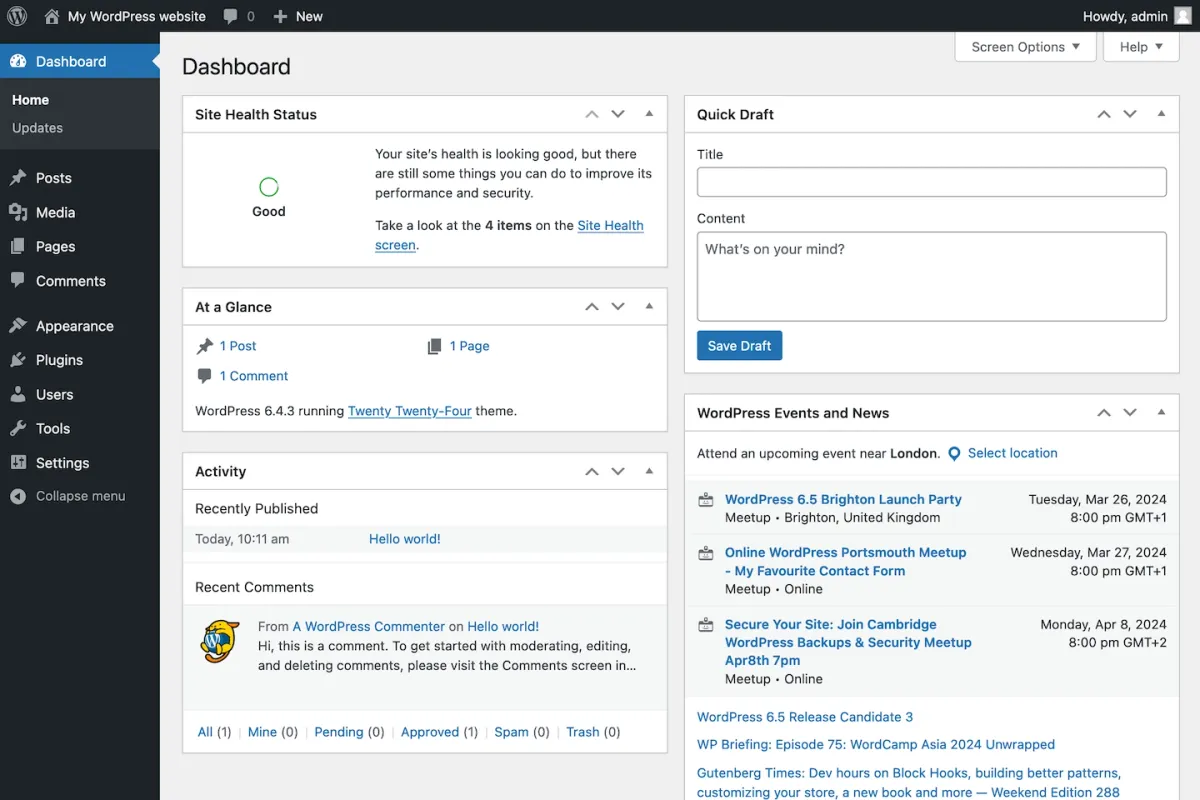
WordPress is a versatile content management system (CMS) that allows users to build and manage websites without needing extensive coding knowledge. With thousands of themes and plugins, it offers endless customization possibilities for creating anything from simple blogs to advanced online stores, all while supporting responsive design and SEO features.
- Blogging: Ideal for creating and managing personal or professional blogs.
- Business Websites: Perfect for small and large businesses needing a flexible website.
- E-commerce Sites: Build online stores with ease using plugins like WooCommerce.
Ghost #2
A streamlined, open-source CMS tailored for publishing, enabling users to create, manage, and monetize content with ease
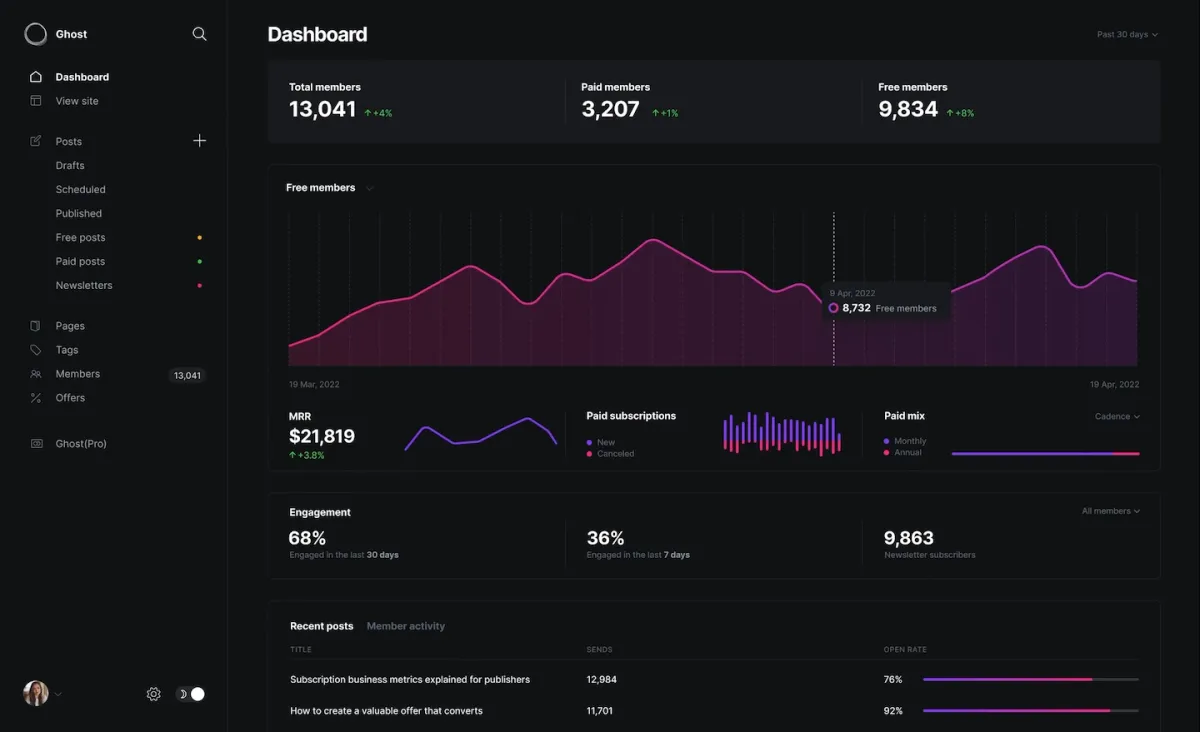
Ghost is a minimalist, open-source CMS designed specifically for publishing and blogging. Its clean interface and Markdown editor make content creation intuitive, while built-in SEO, AMP, and structured data support help improve search engine visibility. Ghost is especially popular among creators and businesses looking for a straightforward platform focused on content without unnecessary complexity.
- Professional Blogging: Ideal for writers and bloggers seeking a clean, distraction-free interface.
- Content Monetization: Great for creators who want to monetize with memberships and subscriptions.
- Newsletters and Email Marketing: Efficient for managing newsletters and sending content to subscribers.
Plasmic #3
A no-code tool for visually designing production-ready web pages and applications, seamlessly integrating with various data source and existing database.
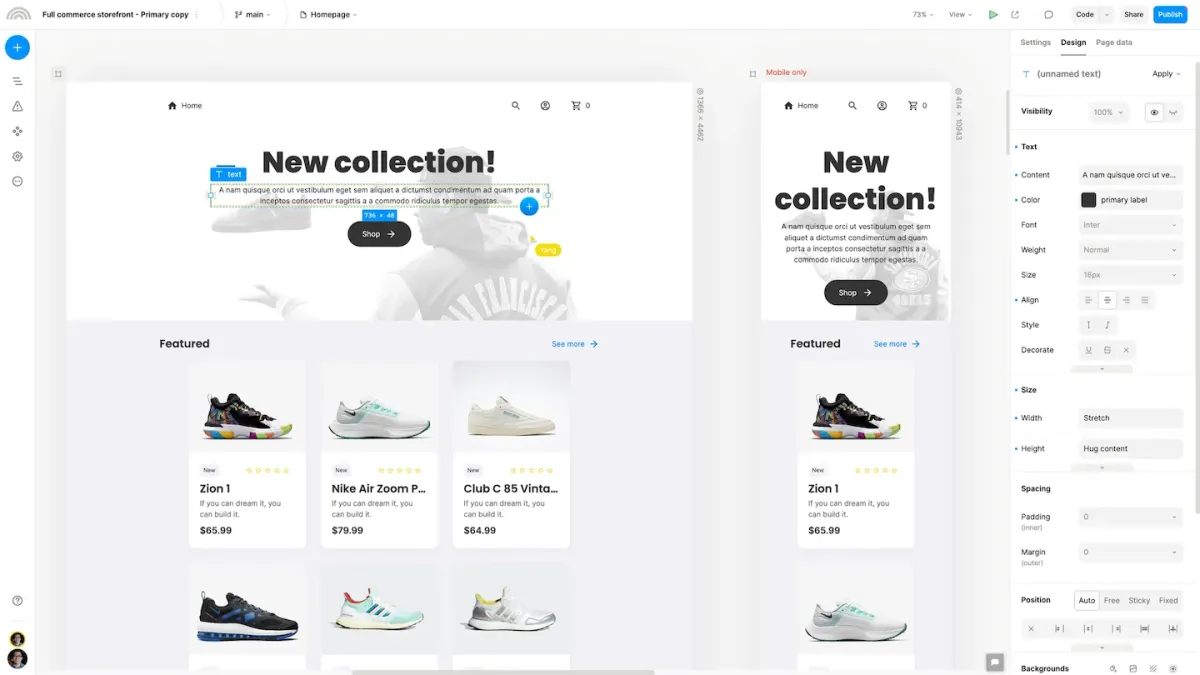
Plasmic is a no-code platform that allows designers and developers to create visually rich, production-ready web pages and components. It offers the ability to design interactively without writing code, while still allowing developers to export designs as React components or integrate directly with existing codebase. This flexibility makes it ideal for teams collaborating across design and development, bridging the gap between creativity and implementation.
- Website and App Design: Ideal for designing professional-grade web pages and apps visually.
- CMS-Driven Sites: Perfect for managing dynamic content using headless CMS integrations.
- Team Collaboration: Great for teams working on shared projects from design to deployment.
Webstudio #4
A no-code platform for creating visually rich, responsive websites, enabling detailed styling and layout control without writing any code.
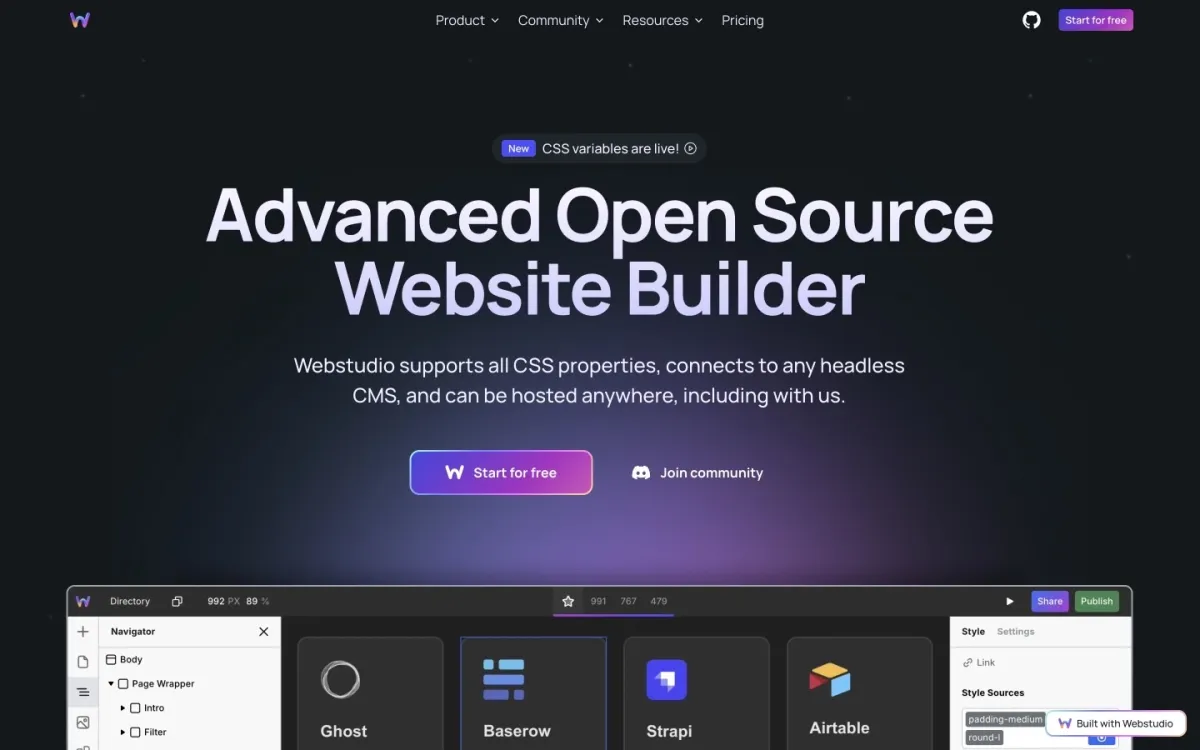
GrapesJS #5
A powerful, open-source framework for visually building HTML templates and web pages without coding.
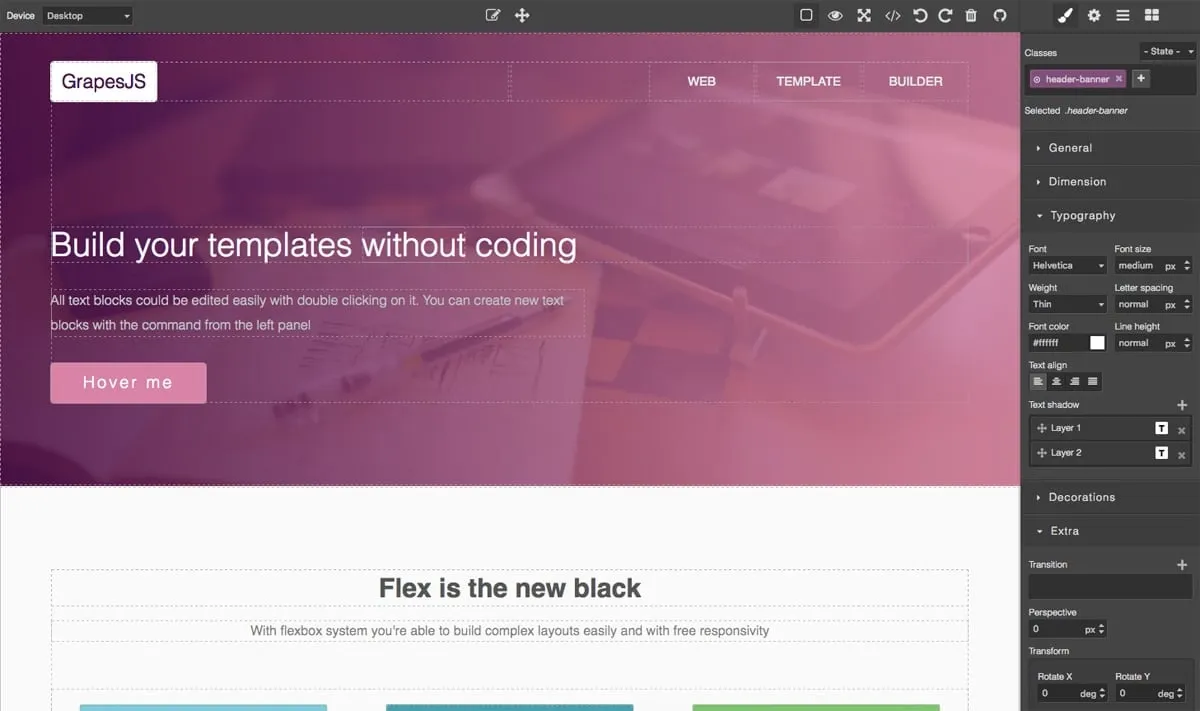
GrapesJS is an open-source visual web builder that enables users to create responsive HTML templates and web pages using a drag-and-drop interface. It offers prebuilt blocks and components, allowing for fast design without the need for coding, while also providing clean HTML/CSS export for production use.
- Website Builders: Ideal for integrating into website-building platforms to offer visual page design capabilities.
- Email Template Creation: Great for designing email templates for marketing campaigns.
- Custom HTML/CSS Designs: Perfect for developers needing fast visual prototyping and code export.
OctoberCMS #6
A robust and adaptable CMS based on Laravel, designed for developers who want flexibility and control over their web projects without sacrificing simplicity and ease of use

October CMS combines the power of Laravel with a user-friendly interface, offering a modular, self-hosted platform for building diverse web applications. Tailored for developers, it includes customizable plugins, themes, and advanced data management features, all designed for straightforward deployment and scalability. With October, developers can build websites from simple content-driven sites to complex, dynamic applications.
- Content-Driven Websites: Ideal for websites focused on rich content and frequent updates.
- Corporate Websites: Effective for company websites requiring scalability and customization.
- Ecommerce and Small Businesses: Supports small to medium eCommerce platforms with secure, customizable solutions.
Wagtail #7
A high-performance, open-source CMS built on Django, ideal for content-driven sites, offering both editors and developers a customizable, intuitive experience
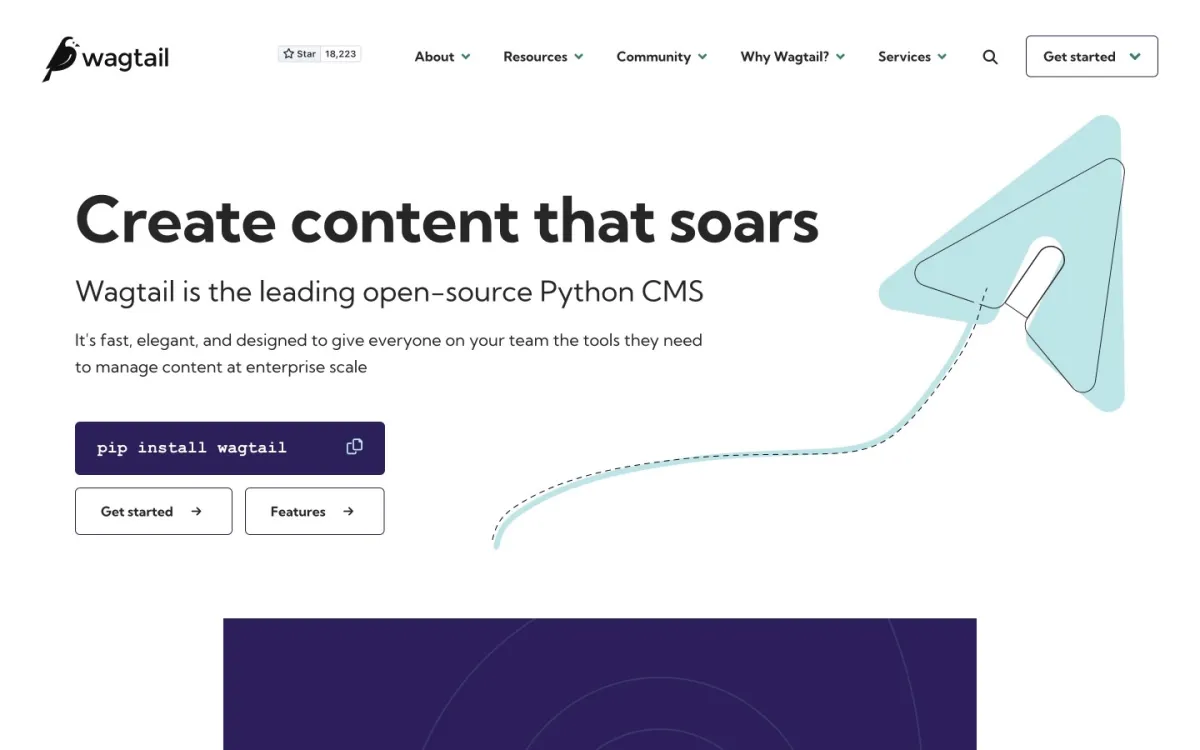
Wagtail provides a streamlined interface with a powerful, flexible StreamField editor, allowing teams to manage rich, complex content while enabling developers to leverage Python’s extensibility. It is well-suited for projects of any scale, supporting both traditional and headless CMS setups to meet diverse needs.
- Enterprise Websites: Scales efficiently for large, content-heavy sites.
- Corporate Platforms: Flexible management for internal and external sites.
- Educational Institutions: Ideal for universities and learning platforms.
# Closed-source Alternatives
If you are looking for more features or an enterprise solution, you might want to consider closed source alternatives. Some of them has decent free tier.
Squarespace #1
A user-friendly platform for building websites, blogs, and e-commerce stores with customizable templates and integrated tools
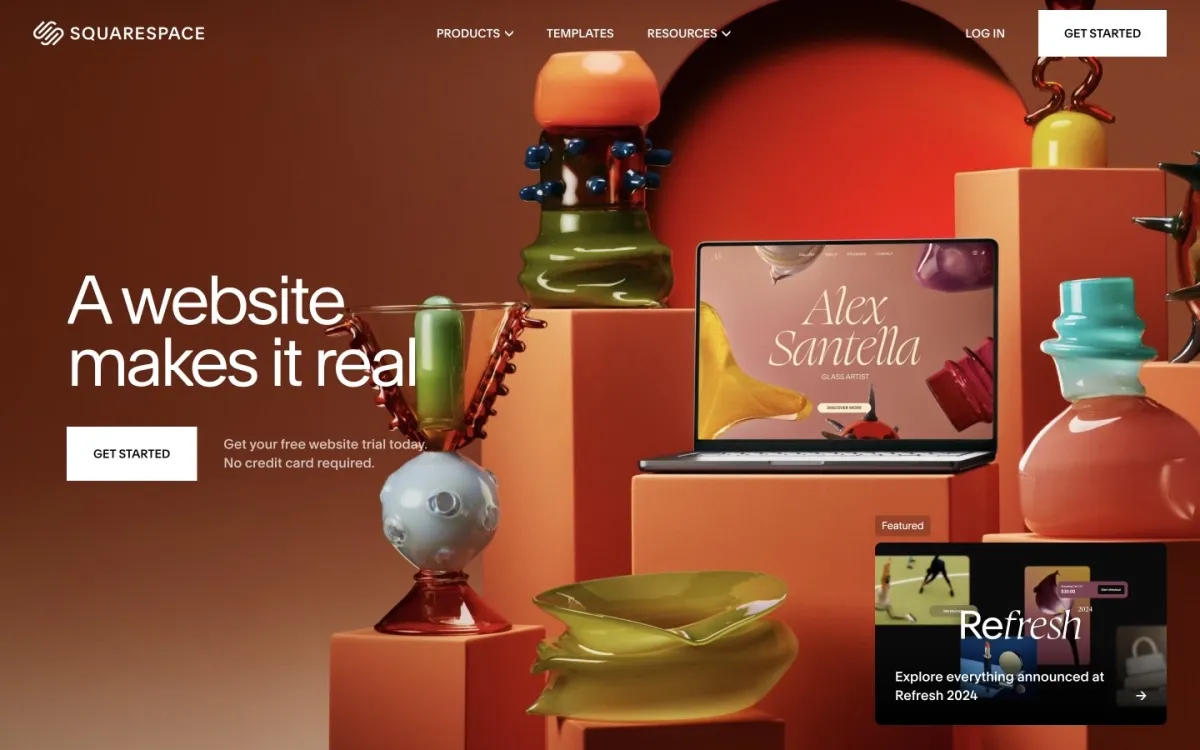
Squarespace is an all-in-one website builder that enables users to create professional websites, blogs, and online stores without needing coding skills. It offers a wide range of beautiful, customizable templates and a drag-and-drop editor to quickly design responsive websites. With integrated e-commerce tools, users can set up online stores with product listings, payment processing, and inventory management, making it ideal for small businesses and personal brands.
- Small Business Websites: Ideal for creating websites and stores for small businesses.
- Portfolios and Personal Sites: Great for professionals looking to showcase portfolios and personal projects.
- E-commerce Stores: Perfect for setting up and managing small to medium online stores.
Wix #2
Easily design and launch your website with intuitive tools and customizable templates tailored to your needs
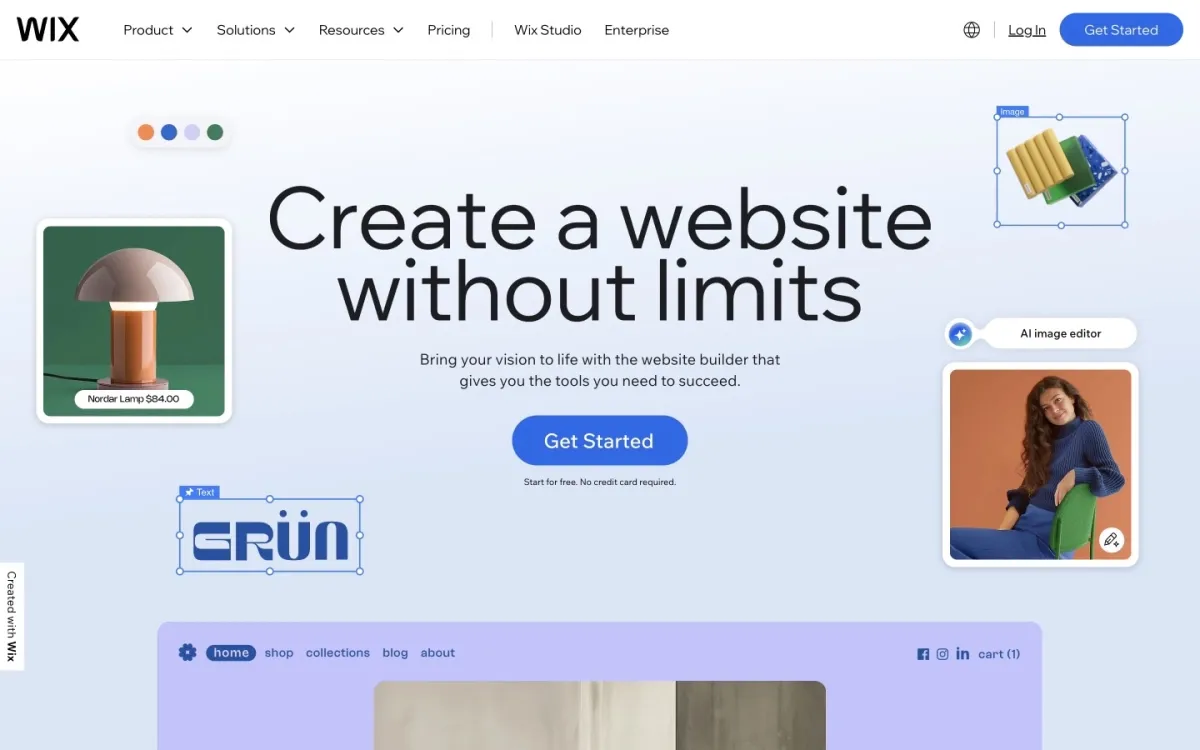
Wix is a powerful website creation platform that empowers users to build professional websites without any coding knowledge. With over 900 designer-made templates and an AI-driven website builder, users can quickly create a fully functional site by simply describing their business preferences. The drag-and-drop editor allows for seamless customization, enabling users to arrange text, images, and other elements effortlessly.
- Small Business Websites: Establish an online presence to attract customers.
- Online Stores: Create eCommerce sites to sell products directly to consumers.
- Portfolio Sites: Showcase work and projects to potential clients or employers.
Shopify #3
Launch your business effortlessly with a comprehensive solution that supports sales across multiple channels
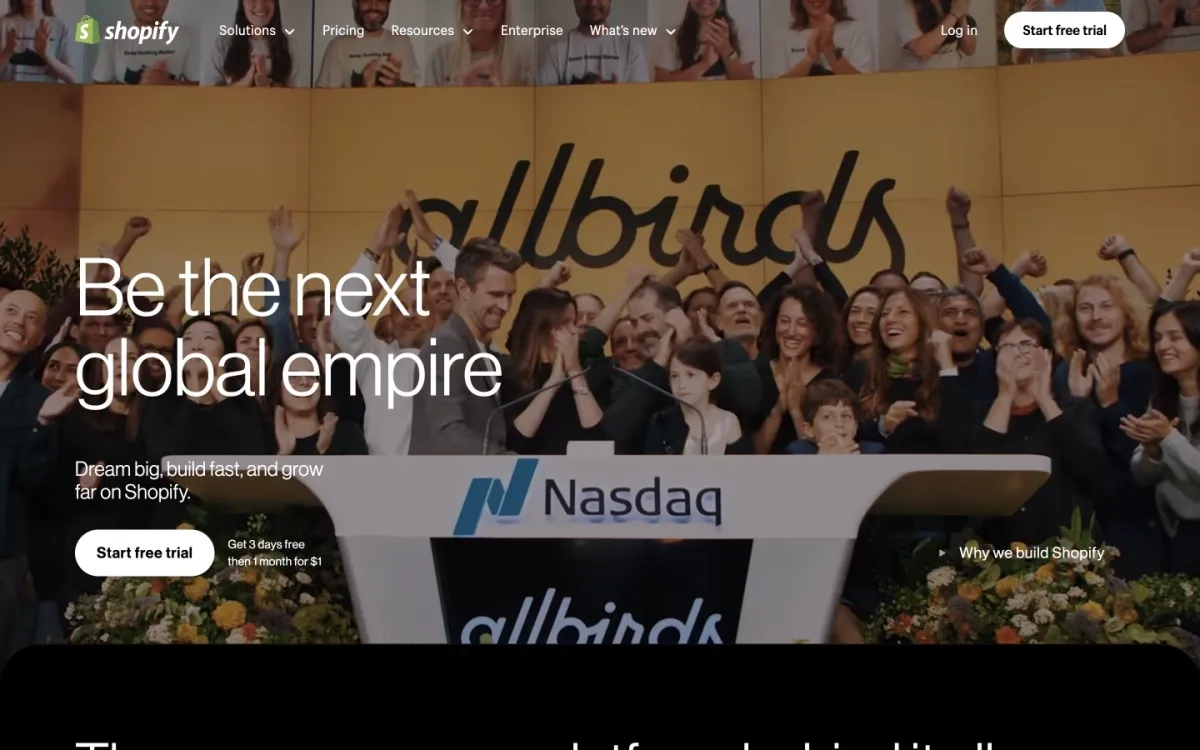
Shopify is a powerful eCommerce platform designed to help businesses of all sizes create, manage, and grow their online stores. With a user-friendly interface and customizable templates, Shopify enables entrepreneurs to set up their shops quickly, whether they are selling products online, in-person, or through social media. The platform supports various sales channels, ensuring that users can reach customers wherever they shop.
- Small Business Launches: Quickly establish an online presence for new ventures.
- Retail Expansion: Transition from physical stores to eCommerce with ease.
- B2B Sales: Create custom experiences for wholesale buyers with tailored pricing and discounts.
Webflow
Freemium
A powerful no-code platform for building production-ready websites
 Made by
Made by